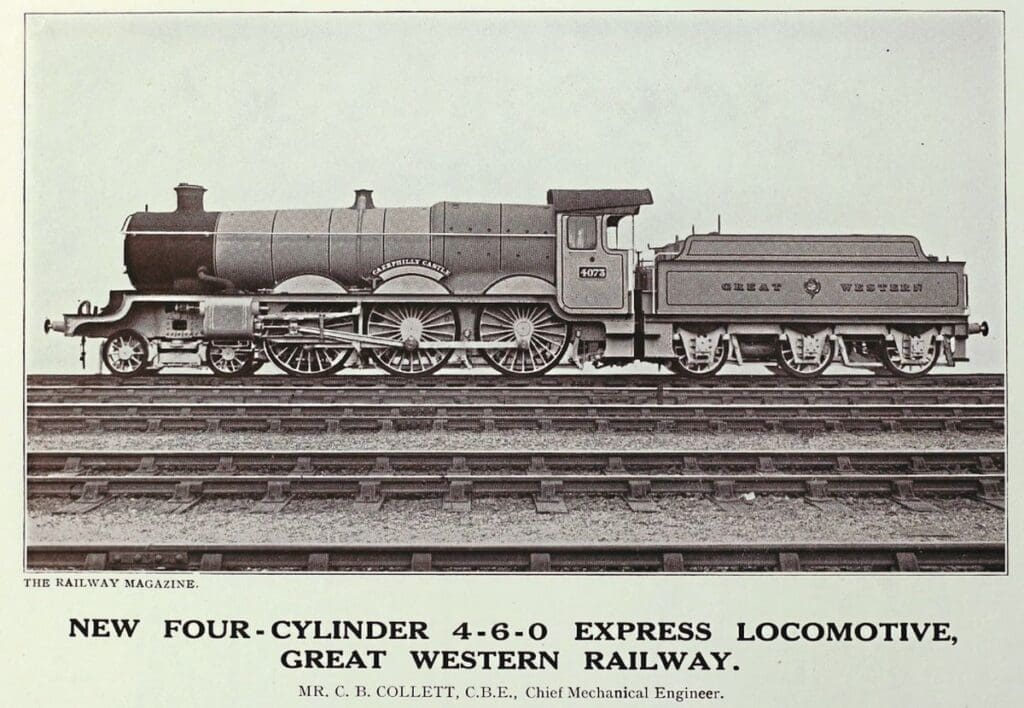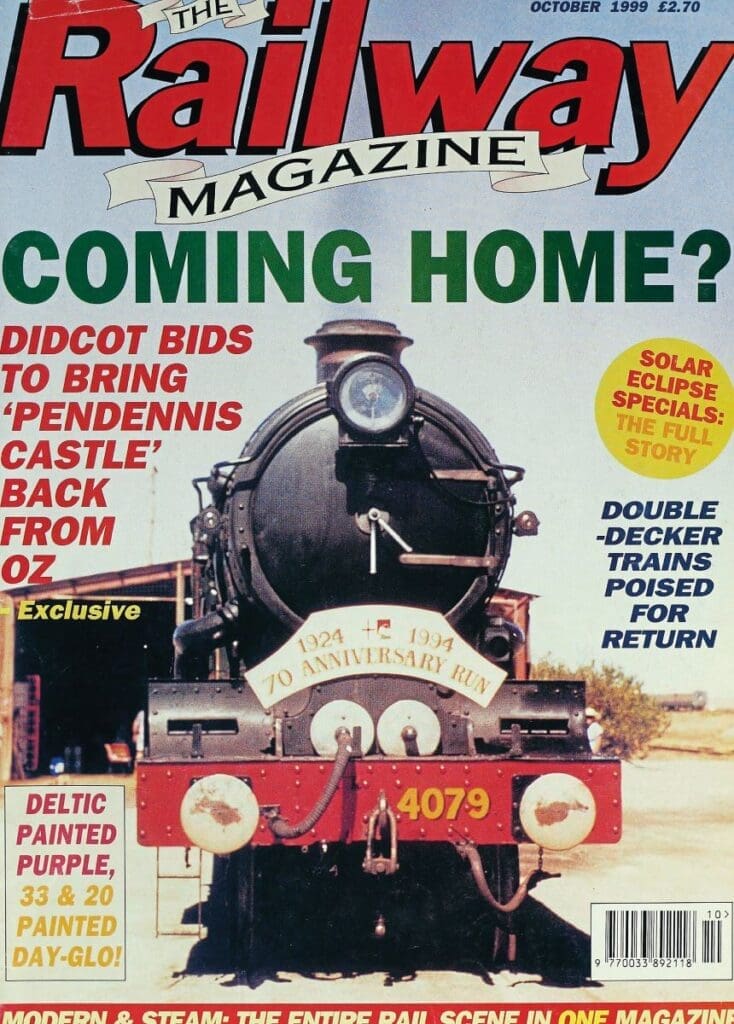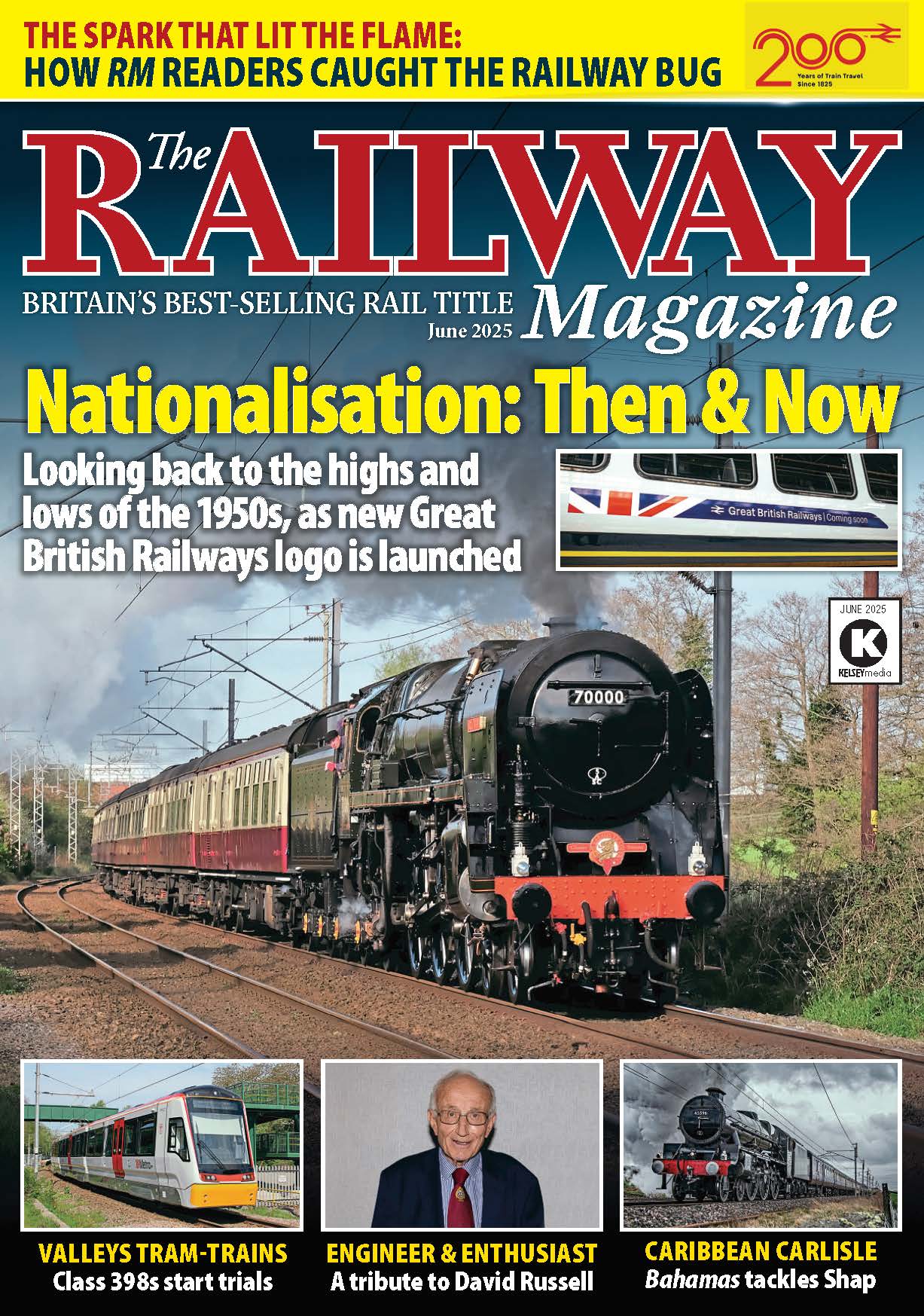Celebrating the GWR’s ‘Castle’ Class, which entered service over 100 years ago in August 1923.

The 4073 ‘Castle’ Class was one of the most powerful and successful types of locomotive for the Great Western Railway.
Although the later ‘Kings’ were more powerful, they were also heavier and therefore restricted to a smaller number of routes, and so ‘Castles’ could be found hauling many of the fastest and heaviest express workings across a larger part of the GWR network.
The ‘Castles’ were designed by Charles Collett as a development of the previous successful ‘Star’ Class, but with a larger boiler and higher tractive effort for use of fast and heavy express passenger workings.
An order for the first 10 was placed with Swindon Works in 1923, with the first of the class No. 4073 Caerphilly Castle entering traffic on August 11 that year, its number following on from the last batch of the ‘Star’ series (which had been named after West Country abbeys).
They were an instant success, so much so that a total of 155 were built in 12 batches through to 1950 in the British Railways era, with 15 ‘Stars’ and the GWR’s sole ‘Pacific’ loco No. 111 The Great Bear also being converted to ‘Castles’ between 1925 and 1940.
No. 4073 was displayed at the British Empire Exhibition at Wembley in 1924 alongside the LNER’s ‘A1’ No. 4472 Flying Scotsman. Both companies claimed to have the most powerful locomotive at the time, which led to No. 4079 Pendennis Castle swapping places with ‘A1’ No. 4474 Victor Wild for trials in April 1925, in which the ‘Castle’ was found to outperform its rival. A year later, No. 5000 Launceston Castle was loaned to the LMS for trials between London and Carlisle, the results ultimately leading to the LMS recruiting William Stanier from the GWR to be its chief mechanical engineer.
The ‘Castles’ were so successful that few developments were made during their service careers. No. 5005 Manorbier Castle was used for streamlining trials in 1935, during which the loco achieved 100mph, but the GWR decided not to take the idea any further and the streamlining was eventually removed (see page 44 of the August 2023 issue). Five locos (Nos. 4009/100A1, 5039, 5079, 5083 and 5091) were trialled for oil firing in 1946-1948, but again this came to nothing and they were converted back to coal use. Then from 1956, double chimneys were fitted to 65 members of the fleet along with larger superheaters for improved high-speed performance.
Rundown and preservation

Withdrawals began in early 1950 with ‘Star’ conversion No. 100A1 (4009) Lloyds. 1962 was the peak year for withdrawals, when 54 locos were stopped, and the last to go was No. 7029 Clun Castle in December 1965 after it had worked the final steam out of Paddington on November 27 that year (see page 45 of the August 2023 issue).
Eight ‘Castles’ made it into preservation. The first was class doyen No. 4073 Caerphilly Castle in 1960, which was handed over to the Science Museum in London but can now be found back at its birthplace at STEAM in Swindon. Nos. 5029 Nunney Castle, 5043 Earl of Mount Edgcumbe, 5051 Drysllwyn Castle/Earl Bathurst, 5080 Ogmore Castle/Defiant and 7027 Thornbury Castle were preserved 1963; No. 4079 Pendennis Castle in 1964 and No. 7029 Clun Castle in 1965.
Only Nos. 4073 and 7027 have not steamed in preservation (indeed No. 7027’s fate currently hangs in the balance after passing through the hands of several owners – see page 38 of the August 2023 issue), while No. 4079 was famously exported to Australia in 1977 after being sold to Hamersley Iron, it eventually being repatriated in 2000 after a campaign led by The Railway Magazine under its then editor Nick Pigott.
Of the six working locos (*currently operational), Nos. 5043*, 5080 and 7029* are at Tyseley, Nos. 4079* and 5051 at Didcot, and No. 5029 at LSL in Crewe.


